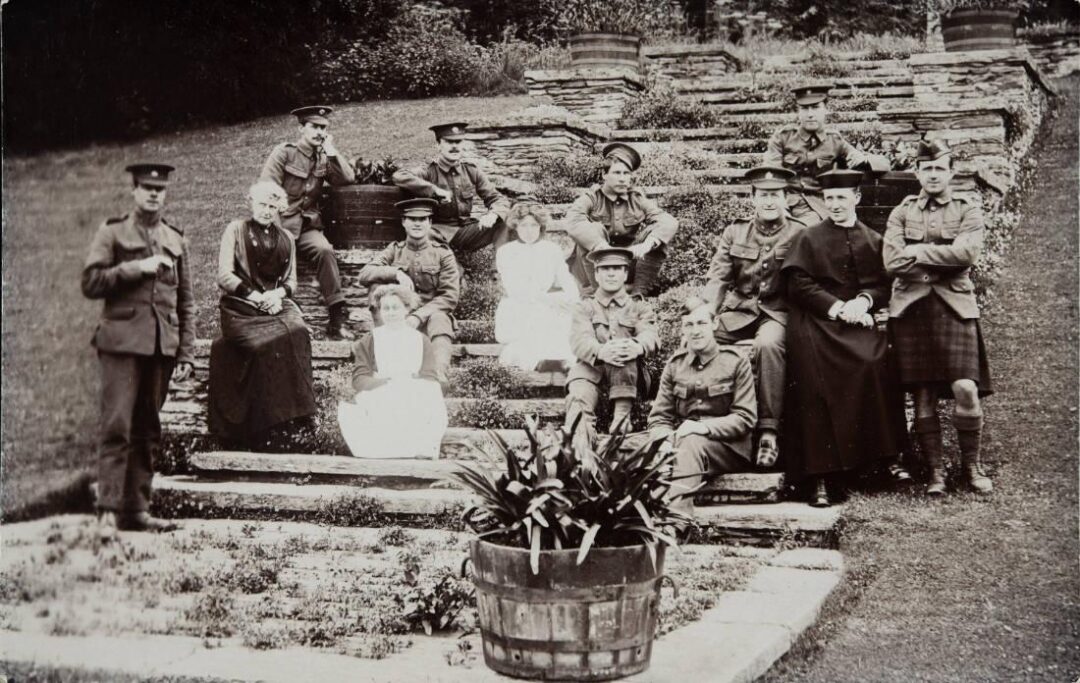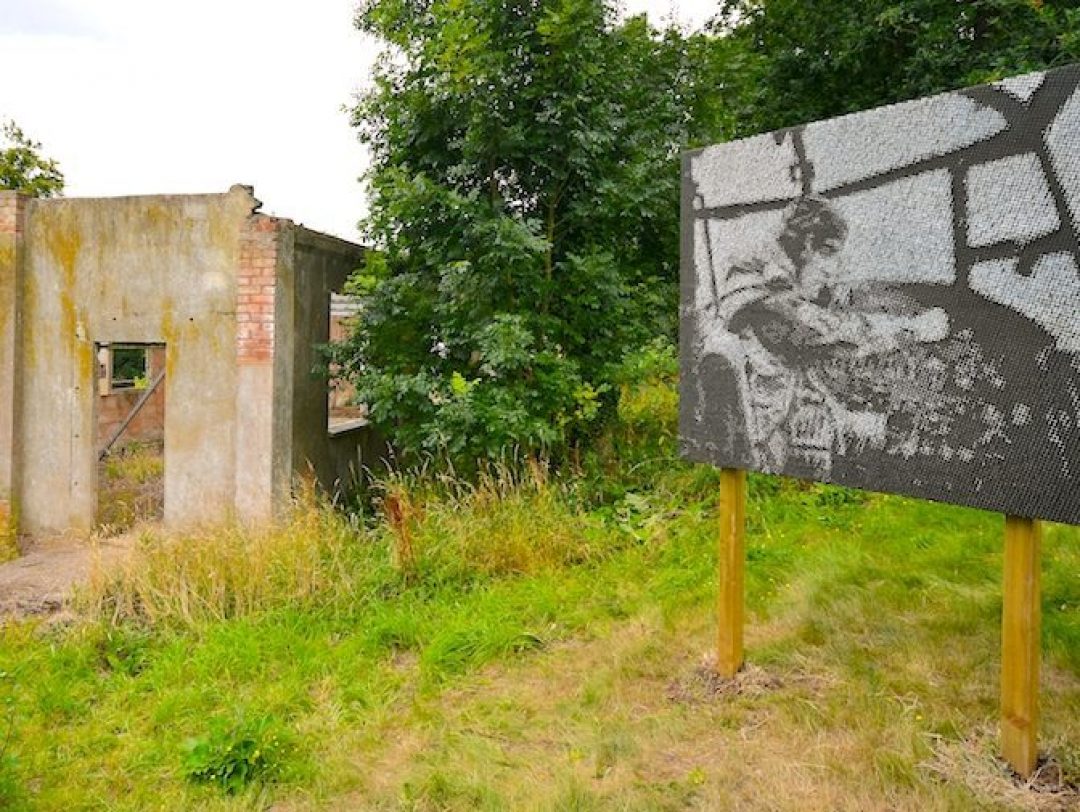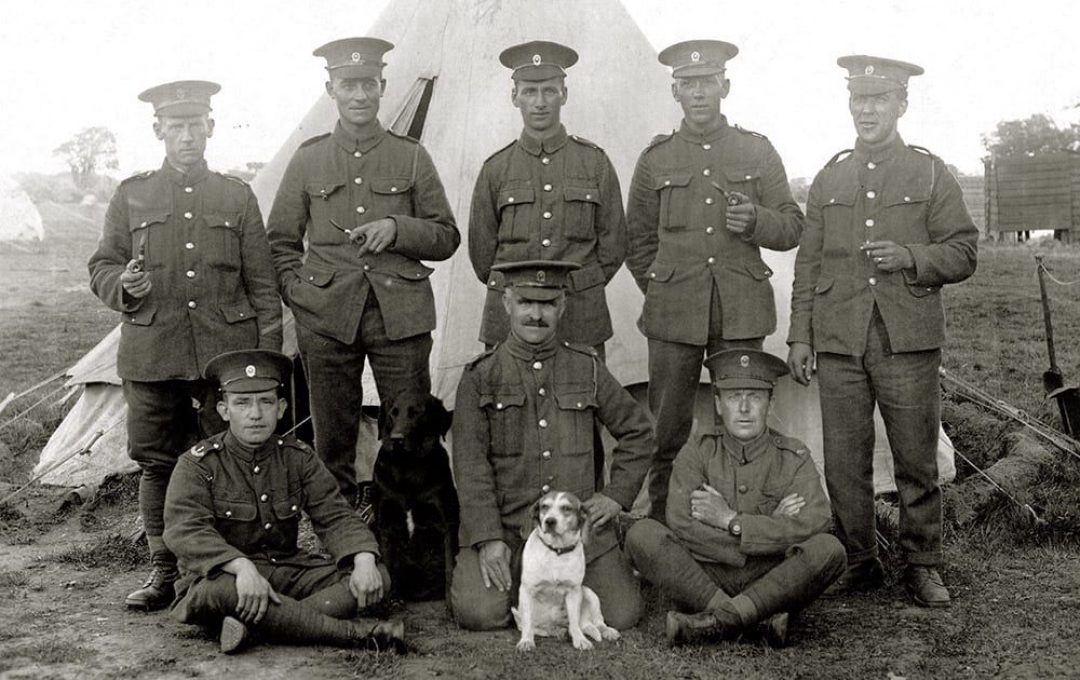1940-42
In July 1940, the British Army established 8th Corps to take responsibility for all British troops in the South West of England, and Hestercombe became the division’s rear HQ. In early 1941 the first six barrack blocks were built with brick bases, concrete block walls and roofs covered with asbestos slates.
1943-44
The British 8th Corps departed Hestercombe on January 12, 1943 and Hestercombe was established as the HQ of the United States 19th District supply services. Joshua Jaffe was transferred to 19th District HQ in March 1943. ‘JJ’ lived in one of the barrack blocks in the woods. Each soldier slept in a ‘cot’ and kept all their personal possessions in a blue ‘barrack bag’. The cots were steel beds with flat springs and a thin mattress. “19th District was hub of all directions of the American Military in South West England” Joshua Jaffe
In early 1944, the US 398th General Service Engineer Regiment started constructing 16 additional barrack blocks – the ‘Hestercombe Camp Addition’. On the evening of June 5, 1944 – the eve of D Day – Joshua Jaffe sat on the haha on the edge of the drive and watched as planes and gliders in their hundreds flew over his head towards the south coast. “The sky was black.“
1945-46
Corporal Esmé Lane and Private Vera Alsop were ATS (Auxiliary Territorial Service) Girls based in Taunton, attached to the Royal Army Ordnance Corps (RAOC) At the end of the war in August 1945, the girls were billeted to Hestercombe. In the winter the huts were very cold – they had concrete floors and no insulation of any kind. There was a single central stove in each building and it took all evening to produce any warmth.
“Our time at Hestercombe was not very comfortable” Vera Alsop.
1946-2006
With the end of the war in Europe on May 8, 1945, the War Department no longer required the use of Hestercombe House and Stables. The rest of ‘Hestercombe Camp’ was retained by the War Department and used as billets for military personnel until 1946. Today, the ruins of just one building are all that remain of the camp of 1940 to 1946. The building has been stabilised to prevent its collapse.
This building is the last physical reminder of all the men and women who served at Hestercombe during WWII, and is dedicated to their memory, and contains a series of display boards illustrating the history of the Army at Hestercombe. For more information see the guidebook Hestercombe at War, available from the Hestercombe Shop.

The First World War
The ranks of the small professional defence force that constituted the British army was augmented by legions of conscripts as the scale and duration of the First World War became apparent. From just over 730,000 men at the outset of war in August 1914, the army grew to more than seven million men and women by the end of the conflict in 1918.
The Hestercombe Estate made its contribution to the war effort by supplying soldiers to British regiments stationed in France, Belgium, India, Egypt, and Mesopotamia (Iraq/Syria/Kuwait). Read more about the Hestercombe staff involved in the First World War.
The Last Nail - Lancaster Cockpit
As part of Open-Up, an exhibition commissioned by Hestercombe Gallery in response to the Covid-19 pandemic, artist Jon England has created The Last Nail – Lancaster Cockpit, installed adjacent to the last remaining World War Two army barrack.
If each of the 18,000 nails in this work – symbols of human endeavour as well as crucifixion – were to represent a life lost, they would stand for less than a third of the 57,205 fatalities suffered by RAF Bomber Command during World War Two.

Among the tens of thousands of civilians and personnel of all nations, who also suffered the catastrophe of aerial warfare, Leutnant Friedrich Kerkoff was pilot of a German Junkers JU88 that fell to earth close to Hestercombe on the night of 27th March 1944.
Find out more about Open-Up.
